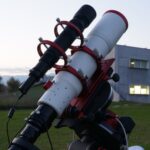
Radio astronomy at school with SPIDER radio telescopes
Is it possible radio astronomy at school? In general, the activities that many schools develop in astronomy are usually made with optical telescopes because instruments for other electromagnetic spectrum bands are considered too expensive or difficult to use. This often translates into single evening visits with students at the public observatories, so you can not conduct a continuous study. Thanks to our SPIDER radio telescopes is now really possible to make radio astronomy at school because, unlike an optical telescope, they can also be used during the day and then during normal lesson time! The SPIDER radio telescope is installed outside and it’s remotely controlled for example from the classroom or the laboratory.









